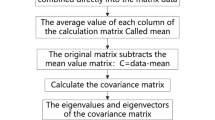Abstract
We present a system to conduct laboratory experiments with thousands of pedestrians. Each participant is equipped with an individual marker to enable us to perform precise tracking and identification. We propose a novel rotation invariant marker design which guarantees a minimal Hamming distance between all used codes. This increases the robustness of pedestrian identification. We present an algorithm to detect these markers, and to track them through a camera network. With our system we are able to capture the movement of the participants in great detail, resulting in precise trajectories for thousands of pedestrians. The acquired data is of great interest in the field of pedestrian dynamics. It can also potentially help to improve multi-target tracking approaches, by allowing better insights into the behaviour of crowds.
Access this chapter
Tax calculation will be finalised at checkout
Purchases are for personal use only
Similar content being viewed by others
References
Qr code - official website. www.qrcode.com
Boltes, M., Zhang, J., Seyfried, A., Steffen, B.: T-junction: experiments, trajectory collection, and analysis. In: ICCV Workshops, pp. 158–165 (2011)
Boltes, M.: Automatische Erfassung präziser Trajektorien in Personenströmen hoher Dichte. Ph.D. thesis, Forschungszentrum Jülich (2015)
Bukáček, M., Hrabák, P., Krbálek, M.: Experimental study of phase transition in pedestrian flow. Transp. Res. Procedia 2, 105–113 (2014)
Chraibi, M., Boltes, M., Schadschneider, A., Seyfried, A. (eds.): Traffic and Granular Flow ’13. Springer, Switzerland (2015)
Clark Jr., G.C., Cain, J.B.: Error-Correction Coding for Digital Communications. Springer, New York (1981)
Daamen, W., Hoogendoorn, S.: Capacity of doors during evacuation conditions. Procedia Eng. 3, 53–66 (2010)
Daniel, W., Dieter, S.: Artoolkitplus for pose tracking on mobile devices. In: Proceedings of 12th Computer Vision Winter Workshop (2007)
Fiala, M.: ARTag, an improved marker system based on artoolkit. Technical report, Institute for Information Technology, National Research Council Canada (2004)
Hartley, R., Zisserman, A.: Multiple View Geometry in Computer Vision. Cambridge University Press, Cambridge (2003)
Jelić, A., Appert-Rolland, C., Lemercier, S., Pettré, J.: Properties of pedestrians walking in line: fundamental diagrams. Phys. Rev. E 85(3), 036111 (2012)
Keni, B., Rainer, S.: Evaluating multiple object tracking performance: the CLEAR MOT metrics. EURASIP J. Image Video Process. 2008 (2008)
Lemercier, S., Moreau, M., Moussaïd, M., Theraulaz, G., Donikian, S., Pettré, J.: Reconstructing motion capture data for human crowd study. In: Allbeck, J.M., Faloutsos, P. (eds.) MIG 2011. LNCS, vol. 7060, pp. 365–376. Springer, Heidelberg (2011)
Lucas, B.D., Kanade, T.: An iterative image registration technique with an application to stereo vision. In: IJCAI, pp. 674–679 (1981)
Reed, I.S., Solomon, G.: Polynomial codes over certain finite fields. J. Soc. Ind. Appl. Math. 8(2), 300–304 (1960)
Schadschneider, A., Klingsch, W., Klüpfel, H., Kretz, T., Rogsch, C., Seyfried, A.: Evacuation dynamics: empirical results, modeling and applications. In: Meyers, R.A. (ed.) Encyclopedia of Complexity and System Science, pp. 3142–3176. Springer, New York (2009)
Secoando, F., Plagemann, C., Jiménez, A.R., Burgard, W.: Improving rfid-based indoor positioning accuracy using gaussian processes. In: 2010 International Conference on Indoor Positioning and Indoor Navigation (IPIN) (2010)
Shi, J., Tomasi, C.: Good features to track. In: CVPR, pp. 593–600 (1994)
Stuart, D., Christensen, K., Chen, A., Kim, Y., Chen, Y.: Utilizing augmented reality technology for crowd pedestrian analysis involving individuals with disabilities. In: Proceedings of the ASME 2013 International Design Engineering Technical Conferences and Computers and Information in Engineering Conference (2013)
Weidmann, U., Kirsch, U., Schreckenberg, M. (eds.): Pedestrian and Evacuation Dynamics 2012. Springer, Switzerland (2014)
Zhan, B., Monekosso, D.N., Remagnino, P., Velastin, S.A., Xu, L.Q.: Crowd analysis: a survey. Mach. Vis. Appl. 19(5–6), 345–357 (2008)
Zhang, Z.: A flexible new technique for camera calibration. PAMI 22(11), 1330–1334 (2000)
Acknowledgements
This study was performed within the project BaSiGo (Bausteine für die Sicherheit von Großveranstaltungen, Safety and Security Modules for Large Public Events) funded by the Federal Ministry of Education and Research (BMBF) Program on “Research for Civil Security – Protecting and Saving Human Life”. Markus Mathias and Bastian Leibe are funded by the ERC Starting Grant Project CV-SUPER (ERC-2012-StG-307432).
Author information
Authors and Affiliations
Corresponding author
Editor information
Editors and Affiliations
Rights and permissions
Copyright information
© 2015 Springer International Publishing Switzerland
About this paper
Cite this paper
Mehner, W., Boltes, M., Mathias, M., Leibe, B. (2015). Robust Marker-Based Tracking for Measuring Crowd Dynamics. In: Nalpantidis, L., Krüger, V., Eklundh, JO., Gasteratos, A. (eds) Computer Vision Systems. ICVS 2015. Lecture Notes in Computer Science(), vol 9163. Springer, Cham. https://doi.org/10.1007/978-3-319-20904-3_40
Download citation
DOI: https://doi.org/10.1007/978-3-319-20904-3_40
Published:
Publisher Name: Springer, Cham
Print ISBN: 978-3-319-20903-6
Online ISBN: 978-3-319-20904-3
eBook Packages: Computer ScienceComputer Science (R0)




